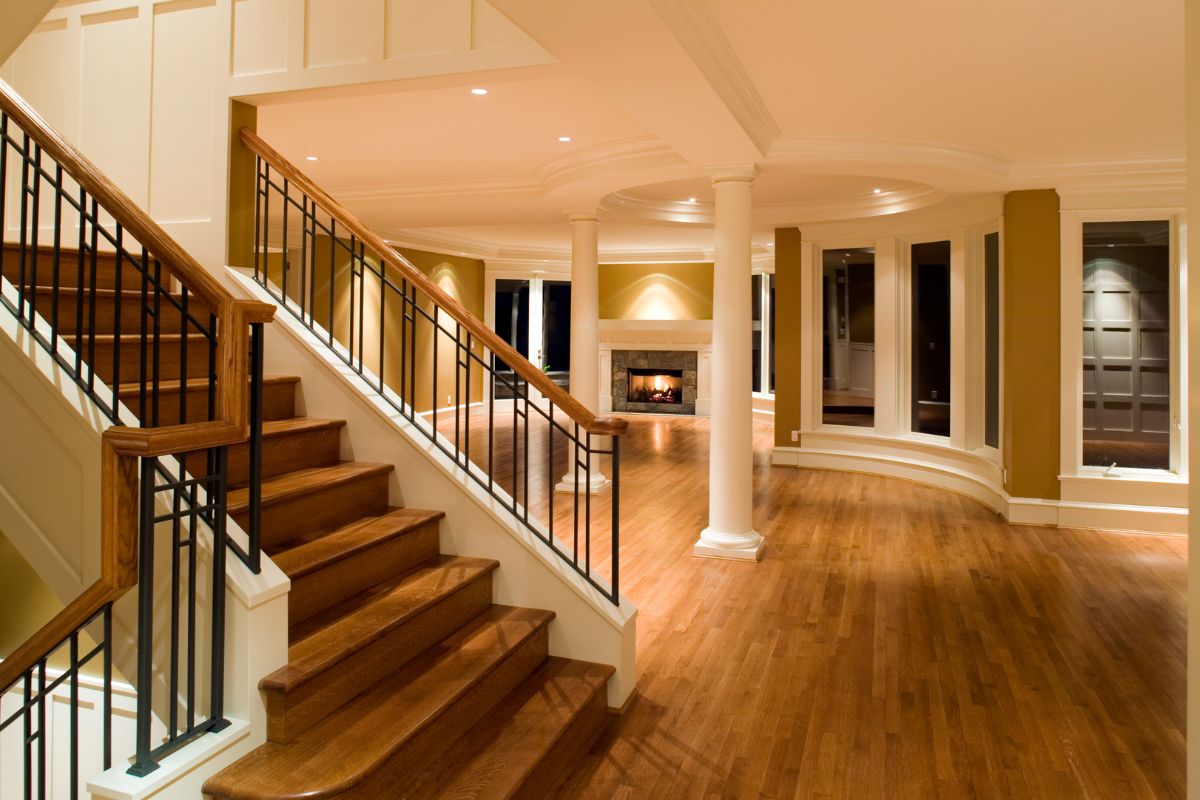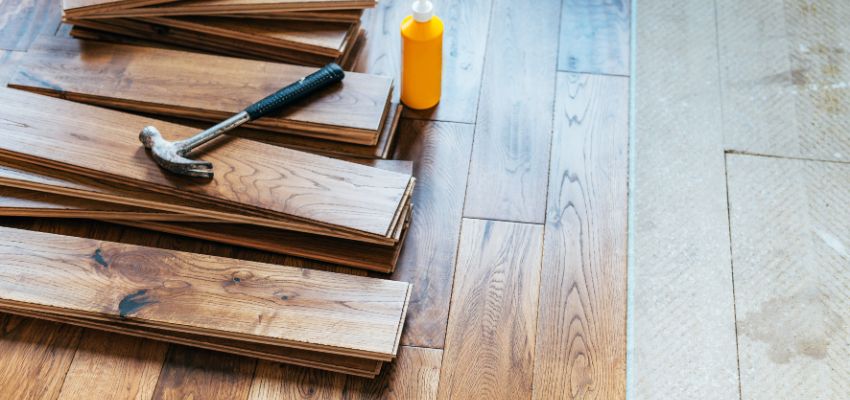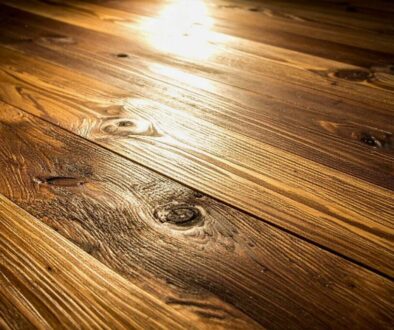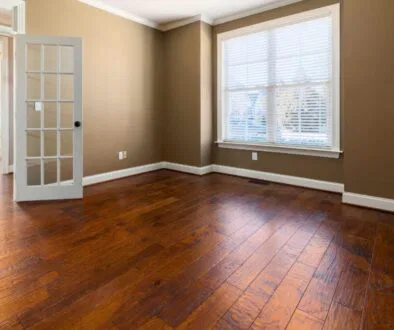Tile To Wood Transition: Should You Make The Switch?

Published January 15, 2024
Flooring decisions in home renovations can be genuinely transformative. Perhaps none more so than the pivotal switch from tile to wood. Imagine this—stepping onto icy tile floors on a chilly morning. You yearn for the comforting warmth of wood beneath your feet. It’s the start of the tile versus wood debate.
In this article, let’s explore everything on tile to wood transition. We’ll probe into the allure and occasional frustrations of both options. Doing so allows you to stride towards making the best choice for your space.
Understanding Tile And Wood Flooring
Tile and wood flooring are prominent options in home design for flooring choices. Each option has unique features that suit different preferences, needs, and spaces in a home. Let’s take a closer look at the defining features of both materials:
Tile Flooring
- Resilience and ease of care. Tiles crafted from ceramic, porcelain, or natural stone resist stains and moisture. They’re the ideal choice for high-traffic areas such as bathrooms and kitchens. They provide effortless maintenance, usually requiring regular sweeping and occasional mopping.
- Aesthetic versatility. Tiles provide various options for designs, colors, patterns, and textures. The vast diversity allows homeowners to create many visual atmospheres. These can range from sleek and contemporary to charmingly rustic.
Wood Flooring
- Natural warmth and timeless appeal. Wood flooring brings timeless elegance and warm ambiance to any space. Their natural charm creates inviting and cozy atmospheres. Wood offers various grain patterns and hues. These suit individual preferences and design styles.
- Upkeep and longevity. Wood flooring, although durable, requires regular maintenance to preserve its beauty. It’s susceptible to wear, especially in high-traffic areas. Periodic refinishing revitalizes its appearance, prolonging its lifespan. This is a long-lasting investment in your home’s aesthetic appeal and value.
Comparison Of Tile And Wood Flooring
When thinking about tile to wood transition, several factors must be considered. Here’s a brief overview of the key distinctions:
- Cost comparison. In general, tile flooring is usually more affordable initially when compared to hardwood. But, hardwood’s potential to enhance a house’s value often justifies the initial higher investment.
- Longevity and durability. Both materials offer durability, depending on maintenance and usage in a room. With proper care, tiles can last a lifetime, while hardwood, when regularly refinished, can endure for generations.
- Comfort and aesthetic appeal. Wood flooring offers a warm and inviting experience underfoot. It has a timeless aesthetic charm. On the other hand, tile is durable and easy to maintain. However, it may lack the comforting warmth that wood provides. It may feel cold and rigid to walk on.
- Environmental impact. Choosing responsibly sourced wood from certified forests is an environmentally conscious decision. Yet, it’s important to note that tiles are durable. Yet, their manufacturing process involves significant energy consumption. This raises valid environmental concerns.
When it comes down to it, choosing between tile and wood flooring requires finding the right balance. You have to consider several factors. It’s about aligning these considerations with your preferences and needs. This helps you make the best decision for you. Additionally, to ensure a good head start, buy wood flooring from a reputable source.
Pros And Cons Of Switching From Tile To Wood
When contemplating on a tile to hardwood transition, it’s essential to consider the benefits and drawbacks.
Advantages
Wood flooring in your home creates a warm and inviting atmosphere, enhancing comfort. There are many customization options. A wide array of wood types and finishes are available. Furthermore, this change often proves to be a valuable investment. It increases the worth of your property.
Disadvantages
Wood flooring has charm, but it’s susceptible to scratches and water damage. It requires more diligent maintenance than the durable nature of tile. Additionally, the higher installation cost is another factor when choosing wooden floors.
The tile to wood transition offers enhanced comfort. It also has customization potential and increases property value. Yet, it’s crucial to consider wear and maintenance requirements of wood flooring. Assess these factors to make the right choice. It should align with your preferences and home needs.

Practical Considerations When Making The Switch
Before transitioning from tile to wood flooring, you must consider certain practical aspects.
- Assess the current flooring condition. Check the condition of your existing tiles. Decide if removing them is worth the time and money. To consider cost-effective options, explore alternatives like installing wood flooring over tiles.
- Choose the appropriate wood type. Select wood that matches your lifestyle and complements the functionality of the room. For areas with heavy foot traffic, consider more durable wood options such as French oak. Make sure you choose the suitable tile to wood transition strip as well.
- Professional installation vs. DIY. Think about your approach to installation. Check whether seeking professional expertise aligns with your available resources, skills, and time. Consider if a DIY approach might be a better fit. DIY projects can save money. However, they need thorough preparation and the right tools.
- Evaluate subfloor compatibility. Verify whether your subfloor is suitable for wood installation. Some subfloors may need adjustments or preparations before laying down wood flooring.
- Climate and wood acclimation. It’s vital to ensure the wood adjusts to your home’s climate to avoid warping or damage. Allow the wood to acclimate by storing it in the room where it will be installed for a few days.
- Budget. When deciding on a budget, it’s essential to be realistic. Aside from the cost of materials, think about other expenses such as installation, tools, and unexpected issues that may arise. Setting a budget that reflects these factors ensures a smoother transition to avoid financial strain.
To smoothly transition from tiles to wood flooring, consider these factors. Doing so will ensure an effective and well-planned transformation.
Navigate The Tile To Wood Transition Seamlessly
The tile to wood transition requires considering several key factors. Both wood and tile have strengths and weaknesses, so carefully evaluate your needs. Make an informed choice that aligns with your home’s requirements. Move forward confidently. Reflect practicality and personal style for a space that embodies your vision and functionality.
Hire The Timber Experts For Your Next Project
Vintage & Specialty Wood should be your source of the highest quality timbers from around the world. When it comes to fabricating and installing reclaimed wood or specialty wood products in your home, we don’t cut corners. We offer many reclaimed wood and specialty wood products such as Douglas Fir, white oak, and much more. We also offer timber framing and wood flooring services as well. Contact our team today to speak to a timber expert about what Vintage & Specialty Wood can do for you.

This Blog Is Fact Checked
This content has undergone meticulous fact-checking by our team of internal experts. Gain a deeper understanding of the high editorial standards we uphold on our website here.

About The Author
Experience, exploration, and knowledge are the hallmarks of writer Rei Bayucca. Her dedication to crafting articles that both inspire and educate will leave you thinking long after you’ve finished reading.




